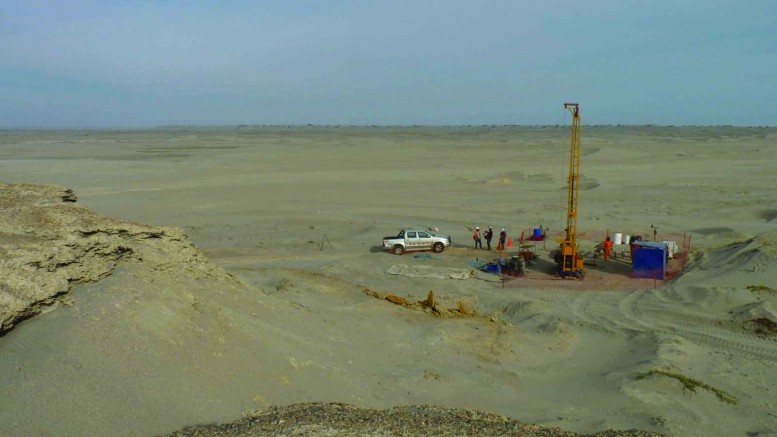VANCOUVER — Focus Ventures (TSXV: FCV) has updated a prefeasibility study at its Bayovar 12 phosphate property, 70 km south of the city of Piura, Peru. It envisages a a US$168-million development that could produce 1 million tonnes of fertilizer product annually over a 20-year life, and hopefully tap into South Americas’s the growing direct-application fertilizer market.
The Bayovar phosphate deposit is a 40-metre thick, laterally continuous and shallow mineralized zone overlain by 30 metres of overburden. Since the material in the proposed open pit is all “free-digging,” it would not likely not require drilling or blasting during mining.
Mineralized material would be mined at a rate of 8,000 tonnes per day from 13 sedimentary phosphate beds, interlayered with diatomite waste, or “interburden.” Bayovar hosts “proven and probable reserves” of 59 million tonnes grading 12.9% phosphate (P2O5), and indicated resources of 210 million tonnes averaging 13% P2O5.
Focus’ beneficiation process would involve drum-washing with seawater and recycled process water, size classification, attrition scrubbing, hydraulic classification, filtering and rotary drying. The process plant is designed to produce, on a batch basis, either a 24% or 28% P2O5 direct-application phosphate rock fertilizer (DAPR).
“The mine plan was simplified so that we would start operations in the south of the deposit, and move progressively northward,” president and CEO David Cass said during a conference call.
“Higher investment in pre-stripping allows us to access all of the phosphate beds sooner and reach production capacity by year two. In addition, instead of having two smaller processing plants, we’re now looking at a single, larger facility, which equates to more upfront capital, but reduces overall operating costs,” he added.

Geologists sample outcrops at the Bayovar 12 phosphate project in Peru. Credit: Focus Ventures
Bayovar’s capital expenses have jumped 32%, compared to previous studies, but the upfront investment has been offset by improved economics. The project now features a 26.4% internal rate of return, and the after-tax net present value has risen 81% to US$458 million at a 7.5% discount rate. Focus estimates that it can now produce DAPR products at cash margins of US$105 per tonne.
The company achieved the economic improvements without altering its underlying phosphate price decks. In 2015, exports of comparable phosphate material yielded prices from US$124 to $163 per tonne.
Since the sedimentary phosphate deposit wouldn’t require a starter pit, the compnay says capital payback depends on hitting nameplate process capacity and keeping “low operating costs” early in the mine’s life.
Bayovar’s reactive phosphate rock looks a bit like fine-grained sand, and is made up of brownish particles of natural phosphorus minerals — mainly the calcium phosphate mineral apatite — that can be applied directly to pasture or crops. It can also be upgraded to a concentrate by washing and flotation for use in making phosphoric acid.
“Although the mine schedule is limited to 20 years, resources exist outside the mine-plan pit, so there is an opportunity for expansion of resources and reserves,” Cass noted.
Focus Ventures shares have traded in a 52-week range of 5¢ to 24¢, and closed up 26% at 9¢ per share upon release of the updated study. The company had 120 million shares outstanding for a $13-million market capitalization at press time, and reported cash resources of $820,000 at the end of February.
Focus said discussions are underway with “several financial institutions” to fund bulk-sampling and a feasibility study.
“We’re located in an established mining region close to a port, and within easy shipping distance of one of the world’s fastest-growing fertilizer markets,” Cass said. “Bayovar rock is arguably the most reactive phosphate rock in the world, which makes it ideal for use as direct-application fertilizer in tropical environments.”


Be the first to comment on "Focus improves phosphate mine plan at Bayovar"